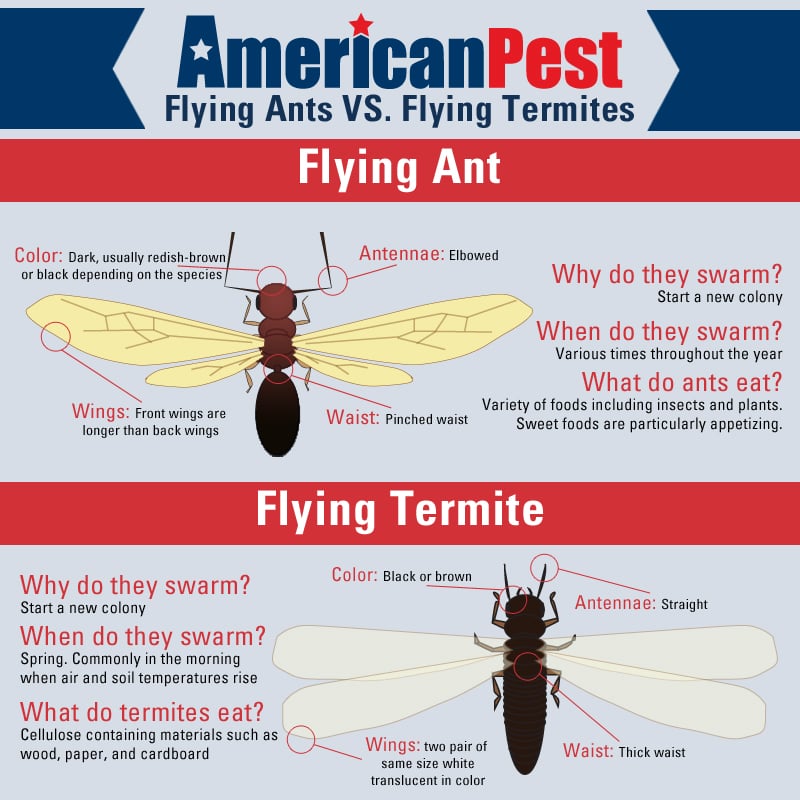Get a free estimate
If you have questions about our services, plans, or pricing we are here for you. Fill out the form below and we will communicate with you by email (and of course provide you with a free estimate).
JANUARY 03 2022 / HOME
In as early as April or May many homeowners and business owners across Maryland, Virginia and Washington D.C. will witness an alarming (yet remarkable!) display of nature – a termite swarm.
Subterranean termites (the reproductive colony members known as “alates”) will begin emerging from underground colonies and often inside homes, commercial buildings and other structures, in an effort to mate and begin new termite colonies.
Swarming termites can cause alarm and confusion for homeowners experiencing activity in and around their home and property.
Termite swarmers emerge by the thousands, and while this phenomenon is impossible to ignore, it is often misunderstood. To their detriment, many homeowners mistake termite swarmers for flying ants and fail to take the necessary action to eliminate the colony.
The two appear very similar in appearance making it difficult to determine what type of pest problem has arrived on their doorstep.
While both are considered nuisances, termites are the more severe problem and should be addressed with detail by professionals to prevent further damage to homes or buildings.
Although termites and winged or flying ants may look alike to the untrained eye, there are distinct differences in their antennae, body, and wings.
The antennae of swarming termites are straight and beaded while swarming ants have antennae that are elbowed or bent.
An easier way to distinguish a termite from an ant is to examine the body.
Termites have a broad waistline and a body that is made up of a head and lower section. On the contrary, winged or "flying ants" have characteristic pinched waistlines and three distinctive body parts, including a head, abdomen, and thorax.
Both termites and winged ants have two pairs of wings but that is where the similarity ends.
Termites have four wings, each of which are equal in size and length that will stack on top of one another when not flying.
They are also easily broken and it is very common to find these discarded, or broken wings around your home or area where you are experiencing a termite swarm.
Ants, on the other hand, have front wings that are noticeably larger in size than their hind wings. Both sets of wings on an ant are much more resistant than that of a termite and do not break off easily.

First and foremost, if swarming insects invade your home, or are noticed in the soil around your property, contact American Pest. You can then follow these recommended steps on what you can do until help arrives:
1. Stop. Take a breath. Don’t panic. We’ll walk you through the process.
2. DO NOT “spray” the swarming termites with any kind of chemical. Instead, calmly and visually inspect for where the swarmers might be entering. Mark that area/areas with tape. Note: they do not bite and will not hurt you or your children in any way.
3. DO NOT tear away woodwork, trim, baseboards, wall coverings, or floorboards in an attempt to see what is going on. We promise you this is sound and IMPORTANT advice.
4. DO Vacuum. It’s okay – just hang out, grab a beverage, and vacuum up the termites.
5. DO inspect outside too – think about where you see the swarming termites inside and go directly to the place that is exterior from that area *(if you can). Note: do not risk life and limb, that’s our job. If you can, mark those areas with tape as well.
6. IF the swarm is on a weekend or after hours just keep vacuuming and do not be surprised to see more within 24 hours. A termite swarm is an indicator of a problem, but will not cause any further harm to your home or property in 3 or 4 days.
An American Pest professional will be happy to explain to you what to do in the event of a termite swarm and how to move forward with the recommended treatment.
We have on-staff entomologists and professional pest control technicians who can help you identify and eliminate your pest problem whether it is termites or ants.
No matter how severe an infestation we offer eco-friendly pest control solutions for termites, ants and other nuisance and damaging pests. For effective termite control in Maryland, Washington D.C. and Northern Virginia, please give us a call or click here.